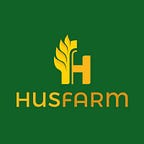The Impact of Cloud Computing on Agriculture: Revolutionizing Farm Management and Productivity
In the rapidly evolving landscape of modern agriculture, cloud computing has emerged as a transformative force, reshaping how farmers manage their operations and make data-driven decisions. This technology, which allows for the storage and processing of data over the internet, offers unprecedented opportunities for efficiency, scalability, and innovation in the agricultural sector. This article delves into the profound impact of cloud computing on agriculture, exploring its applications, benefits, and the future prospects it holds for the farming industry.
The Advent of Cloud Computing in Agriculture
Cloud computing’s infiltration into agriculture marks a significant leap from traditional farming practices. It enables the aggregation and analysis of vast amounts of data from diverse sources, including satellites, soil sensors, weather stations, and farm equipment. This data-centric approach facilitates more informed decision-making, optimizing operations from planting to harvest.
Key Applications of Cloud Computing in Agriculture
- Precision Farming: Cloud computing lies at the heart of precision agriculture, enabling farmers to access detailed insights about their crops and soil conditions. By analyzing data collected through various sensors and aerial images, farmers can tailor their practices to the specific needs of each plot, enhancing efficiency and crop yields.
- Resource Management: Water and nutrient management are critical in agriculture. Cloud platforms analyze weather patterns and soil moisture levels to recommend precise irrigation and fertilization schedules, reducing wastage and environmental impact.
- Supply Chain Optimization: Cloud computing streamlines the agricultural supply chain by providing real-time data on crop stages, market demand, and logistics. This transparency helps in reducing losses, improving product quality, and ensuring timely delivery to markets.
- Disease and Pest Control: Early detection of diseases and pest infestations is facilitated by cloud-based systems, which can process and analyze data from multiple sources. This timely intervention prevents widespread damage, safeguarding yields and investments.
Advantages of Cloud Computing in Agriculture
- Cost Efficiency: Cloud computing reduces the need for expensive hardware and software, offering scalable solutions that fit the varied needs of farmers and agribusinesses.
- Accessibility: It provides easy access to sophisticated analytical tools and databases, previously available only to large agricultural corporations, leveling the playing field for small to medium-sized farmers.
- Data Integration: The ability to integrate data from multiple sources into a unified platform enhances the accuracy of predictions and recommendations, leading to better outcomes.
- Sustainability: By optimizing resource use, cloud computing contributes to more sustainable agricultural practices, aligning with global efforts to combat climate change and preserve natural resources.
Challenges and Considerations
Despite its numerous benefits, the adoption of cloud computing in agriculture faces challenges. These include concerns over data security and privacy, the need for reliable internet connectivity in rural areas, and the requirement for technical skills among farmers and agricultural workers. Addressing these challenges is crucial for maximizing the potential of cloud computing in the agricultural sector.
The Future of Cloud Computing in Agriculture
Looking forward, the integration of cloud computing with emerging technologies such as artificial intelligence (AI), the Internet of Things (IoT), and blockchain holds immense promise for the future of agriculture. These technologies can enhance predictive analytics, automate operations, and ensure transparency and traceability in the supply chain, driving further innovations and efficiencies in the field.
Conclusion
Cloud computing is revolutionizing agriculture, offering solutions that enhance productivity, sustainability, and resilience. As the technology matures and adoption grows, its impact on the sector is set to deepen, heralding a new era of smart, data-driven agriculture. Overcoming existing challenges and leveraging the full potential of cloud computing will require concerted efforts from governments, technology providers, and the agricultural community. Nonetheless, the trajectory points towards a future where cloud computing is integral to meeting the world’s growing food demands sustainably and efficiently.
